Auburn’s Citrus Bowl History
It takes countless hours to research Auburn uniforms and create content. If you like this site and the Auburn Uniform Database social media accounts, please consider supporting through Buy Me A Coffee. No, you aren’t actually buying a coffee – it’s just a simple way to support your favorite creators. Thank you for your consideration and continued support of the AUD.
2020 has been a crazy year. Through schedule changes, postponements, cancelations, and everything in between, it’s been a challenge to create content for the site this year. It didn’t feel right to publish the annual Year in Review and CFB Uniform Preview articles this year. Showcasing all the new Auburn Under Armour apparel was also canceled for the same reason.
But bowl season is now upon us. For the most part, college football survived the tumultuous season and one of the best times of year is finally here. There aren’t many things better than watching football games for weeks straight.
The Auburn Tigers will be turning the calendar to 2021 in Orlando as they face Northwestern in the Citrus Bowl. In the 45th bowl game in program history, Auburn will face Northwestern for just the second time and play in the Orlando-based bowl game for the first time since 2006.
Here you will find a comprehensive look at Auburn’s Citrus Bowl history and uniforms across the Tigers’ 82 years of bowls.
Uniform History
The Citrus Bowl was first played in 1947 and has been played yearly ever since. Back then, it was named the Tangerine Bowl and was renamed the Florida Citrus Bowl in 1983. Few bowl games have such a rich history of name changes as the Orlando-based fruit-named bowl.
Auburn made their first appearance in the bowl game in 1982 – the final year of the Tangerine Bowl namesake. This was the first postseason appearance for the Tigers since 1974. Pat Dye’s second year as head coach was just what Auburn needed to make another bowl game.
The 1982 Tangerine Bowl was also the first time Auburn wore a bowl patch of any kind. The bowl game’s logo, an orange tangerine with a green T, was worn on both shoulders and replaced the TV numbers. This was common for the time, and something Auburn would do for the rest of the decade.
The Tigers would defeat Doug Flutie’s Boston College Eagles 33-26, but the game wasn’t as close as the score indicates. BC scored their last touchdown as time expired.
Four years later following the 1986 season, Auburn would make the return trip to Orlando, this time facing USC. The Tigers sported their white jerseys – a somewhat rarity for Auburn bowl games – and, like the rest of the 1980s, wore the bowl game patch on both shoulders over the numbers.
The bowl had undergone their first of many name changes at this point, changing to the Florida Citrus Bowl. The rather new logo was once again placed on the shoulders.
The USC Trojans took the early lead when they returned a Jeff Burger interception for a touchdown. It would be the only score for the Trojans.
Brent Fullwood ran for 152 yards and a touchdown. The eventual #1 pick in the NFL Draft Aundray Bruce was named the game’s MVP with three sacks and a forced fumble. Auburn would top off the game with a late safety in the fourth quarter.
After a fourteen-year hiatus, Auburn returned to central Florida in 2000 for the first bowl game under Tommy Tuberville. The Tigers would be pitted against #17 Michigan led by legendary coach Lloyd Carr.
This was the first time Auburn had worn white jerseys in a bowl game since their last trip to Orlando in 1986. The Tigers had played in seven straight bowl games wearing the navy tops.
The 2000 matchup marked the first time Auburn wore the Citrus Bowl patch on the chest rather than the shoulders. It also marked the Tigers’ first loss in the game.
Ben Leard and Rudi Johnson led Auburn in a strong comeback effort, but the Tigers were unable to recover a late onside kick. Michigan would win 31-28.
By the time Auburn returned after the 2002 season, the Citrus Bowl was no more. Capital One was the presenting partner for the Florida Citrus Bowl in 2001 and 2002. From 2003 until 2014, the game was known solely as the Capital One Bowl.
Ronnie Brown rushed for 184 yards and scored twice to be named the MVP of the game. The #22 Tigers defeated #10 Penn State 13-9.
Auburn’s final appearance would come just three years later following the 2005 season, as the Tigers were set to face the Wisconsin Badgers. The two teams met just a few years prior in the 2003 Music City Bowl.
The Tigers would revert to wearing the navy tops after three straight appearances in white. The Capital One Bowl patch would have to find a new location, as this was also the first year that Auburn adopted the SEC patch full-time (Auburn wore the patch first in 1998 but it disappeared the following year). The bowl patch was slapped underneath the Russell Athletic logo, which would be mimicked for the 2013 BCS title game and 2014 Outback Bowls.
Courtney Taylor and Brandon Cox hooked up for a touchdown to kick off the fourth quarter, but it wasn’t enough. The Tigers would fall 24-10.
Matchup Preview
When Auburn and Northwestern faced off in Tampa back in 2010, the Wildcats were outfitted by adidas. A year after the game, Northwestern signed with Under Armour and recaptured their ownership of the traditional “Northwestern Stripes.”
Though the term has been used for decades to represent the specific stripe pattern that Auburn has sported, the Northwestern Stripes first originated at the Chicago-area university in 1928. After many years of not wearing the stripes that bore their name, the Wildcats finally re-adopted the pattern in 2012 with their first uniforms from Under Armour.
Those first Under Armour uniforms were rather controversial. The signature stripes weren’t placed on the sleeves but rather across the center of the chest and back. The new location of the stripes was such a unique design choice and Northwestern has stuck with the look ever since.
While Northwestern has dabbled with some interesting alternate uniform designs, they’ve kept with the standard looks for the most part. The Wildcats have a full set of purple, white, and black colorways of jerseys, pants, and helmets. They’ve even gone so far as to experiment with mixing facemask and helmet shell colors in recent seasons.
Auburn will be sporting the white jerseys for the 2021 edition of the Citrus Bowl, which means Northwestern can decide between their purple and black jerseys. The Wildcats have worn a different uniform combination each game this season, and there’s a chance that could continue.
Northwestern has stuck with rather safe looks for bowl games, going black/white/white for the 2018 Holiday Bowl and a bit less traditional with a black/purple/purple look for 2017’s Music City Bowl. I think we can safely rule out the black Gothic uniforms entirely, though.
Personally, I love Northwestern’s purple/purple/black combination and think that would contrast perfectly against Auburn’s all-white threads. When these two teams met in 2010, the Wildcats went purple/white/white which led to more than enough white on the field. Hopefully Northwestern is willing to mix it up a bit and bring a different combination (albeit with their purple jerseys) and create a nice uniform combination for New Year’s Day.
Will Pat Dye be Honored?
Auburn kicked off 2020 with a special helmet to honor the late Pat Sullivan in last year’s Outback Bowl.
Pat Dye, Auburn’s head football coach and Athletic Director in the 1980s and 1990s, passed away in June. Throughout the season, the team has worn a special memorial decal on the back of the helmets. A similar design was placed on Pat Dye Field at Jordan-Hare Stadium.
When Dye first arrived at Auburn, he not only inherited a program and athletes from Doug Barfield, he also inherited Barfield’s uniform choices. The preceding Auburn coach had put his stamp on the team’s aesthetics and added a lot of orange to the arsenal, including the famous orange jerseys. Dye quickly mothballed the orange tops but slowly reverted from the orange belts and eventually the orange facemasks.
Much of Dye’s early success at Auburn was when the team sported orange facemasks. The look has become a nostalgic favorite for many Auburn fans. A number have asked if Auburn would break out the alternate-colored masks for the first time since 1984 in honor of the former head coach.
It didn’t happen during the regular season. In a normal, non-covid season, though, that may not have been the case. With supply chains logged up and delays abound throughout the country, it was probably difficult to coordinate the Dye tribute. If it was going to happen at all, of course.
With some time off before the bowl game, and based on the precedent set last year, there’s a chance that the Tigers break out the orange masks in Orlando. Of course, a counterargument could be made that Dye was honored throughout the season with a decal and field painting – neither of which Sullivan had, as he died following the end of the regular season.
Will Auburn break from the usual uniform design again? Will they announce it the night before the bowl game like last year? We will have to wait and see what they decide to do.
Field History
Possibly the most popular aspect of the Auburn Uniform Database – and a personal favorite of mine – is the collection of bowl game field designs. Every bowl game is different, and every bowl game field design is even more different. Every field has so much character and was such a joy to recreate.
When Auburn first appeared in the Tangerine Bowl, the field was incredibly simple. The tree logo was placed at midfield with the tangerine-T logos placed on each 30-yard line. The endzones featured boxes painted in team colors, with the team nickname painted in a contrasting team color.
Things were even more simple for the next trip, as no team names were painted on the field whatsoever.
The 1986 edition of the Citrus Bowl once again had the logo at mid-field but had the bowl name in the endzones. The endzone text was rendered in a comically beautiful bubble font that brought some needed character to the rather bland field.
The bubble font was a mainstay for years and was still in place when Auburn returned in 2000.
At this point, the bowl game had teamed up with Capital One. The primary tree logo reflected that while also including the bowl name around the circle. Capital One’s logo was also littered across the field, being placed a total of nine times between the endzone outlines, 20-yard lines, and midfield.
After the Citrus Bowl had completely converted to the Capital One Bowl, the fields added some more color. But they kept all the Capital One ads.
The 2002 field design added team-colored endzones, partially, and outlines around each half of the field. Auburn’s endzone text was painted in a rather simple font while Penn State’s official wordmark was used. Each team name was accompanied by the Capital One Bowl logo that was also placed at midfield.
In 2006, Capital One once again doubled down on the logo placements, enlarging the 20-yard line placements and adding a white outline for better visibility. The logos were also once again placed on the back endzone outlines.
The endzones were fully painted in team colors this time around, and the team names matched font-wise this time around.
The last few editions of the Citrus Bowl have stayed rather true to the overall aesthetic of that 2006 design – colored endzones and field outlines with fewer ad placements, thankfully.
Last year’s game against Alabama and Michigan featured both team’s traditional endzone designs from their respective home stadiums. The year before saw Kentucky’s home endzone design, minus the checkerboard, but Penn State’s home lettering over a colored background. The Nittany Lions go with white text over unpainted backgrounds at Beaver Stadium.
Both editions also featured the stadium’s name – Camping World Stadium – painted on the 15-yard lines on the outside of the numbers.
What does that mean for the Auburn-Northwestern game? It may look a little like this:
It’s worth noting that there may be a new addition to the field and helmets this season. A new organization called Bowl Season was founded this year off of the former Football Bowl Association with the mission to “spotlight the distinctiveness of each of the bowl games.”
The important detail here is that once teams became bowl eligible by winning their sixth game of the year, they were expected to wear the Bowl Season logo on their helmets. That, however, will be implemented starting next year due to the minimum win requirement being waved.
The Bowl Season logo has been painted on some fields this year, though. It may appear on the Citrus Bowl field this season, opposite the stadium name on the 15s.
Of course, this is always subject to change and I expect it to. I’ll post the updated design on my social media accounts and the final result will end up on the Bowl Game Fields page, where you can find a historic catalog of most bowl fields that Auburn has played on.
Bowl History
Auburn football has played in 43 bowl games to a 24-17-2 record. That began back in 1937 when Auburn met Villanova in Havana, Cuba. This was the first game between two American universities on foreign soil. Despite the riots and gunfire raining outside the stadium, the game went on. Auburn led 7-0 for most of the game, but Villanova would block a punt in the closing minutes to tie the game at 7. The Tigers would tie in their first bowl game – and they wore orange jerseys doing so.
Auburn would get their first bowl victory the following season, defeating Michigan State in the 1938 Orange Bowl. It would be 16 years later that Auburn would make another bowl game, facing Texas Tech in the 1954 Gator Bowl. Auburn would wear orange again – Texas Tech would wear red. That would also be the debut of Tech’s Masked Rider mascot.
The Tigers would play in the Gator Bowl for three straight seasons, including becoming the first team to play in the same bowl game twice in the same calendar year. Auburn and Texas Tech faced off on January 1, 1954, following the 1953 season. In an attempt to garner more attention, the Gator Bowl moved to December 31. Auburn would face Baylor on New Year’s Eve 1954. The Tigers would be paired with conference foe Vanderbilt in 1955.
Bowl patches would first appear on an Auburn football uniform for the 1982 Tangerine Bowl when the Tigers faced off against Doug Flutie’s Boston College Eagles. The patches would replace the TV numbers on the shoulders, rather than be placed on the chest as is common today.
This would be commonplace for the rest of the decade, with the 1990 Hall of Fame Bowl being the final occurrence. Twice during the 80s, Auburn would wear a single bowl patch on one shoulder and an SEC Champions patch on the other. A few times, the game patch was actually customized to include Auburn colors and logos.
For even more Auburn bowl game stories, be sure to check out the Auburn Uniform Database on Facebook and Instagram.
Bowl games are also one of the most popular projects on this site. Every single uniform and patch worn during the bowl games are available here, and a majority of the field designs are also available. You can also find uniform matchups from 2012 to today, viewing by season or by team.
2020 has been rough for all and here’s to hoping the new year will bring some sense of normalcy.
With the dismissal of Gus Malzahn as Auburn’s head coach, the bowl game looks to be the final outing for much of the current coaching staff. As a Gus fan, I was sad to see him leave Auburn (and sad to end the Gus Malzahn Vest & Visor trackers, which you can now view here). However, I understand that college sports is a business and must go on. I look forward to what Bryan Harsin can bring to Auburn.
With Harsin’s introduction as the next head coach, many people joked about colored fields at Auburn (myself included) and the possibility of alternate uniforms for the Tigers. Check back following the bowl game as a new article details how things may change aesthetically under the new leadership.
Enjoy learning about Auburn uniforms and history? Want to see more like this? Be sure to follow the Auburn Uniform Database, like the AUD Facebook page, Instagram page, and follow me on Twitter for even more uniform news. To support this work, you can donate directly via Buy Me A Coffee. You can also purchase your favorite team’s merchandise through Fanatics, with a portion of your sale going to support this website.
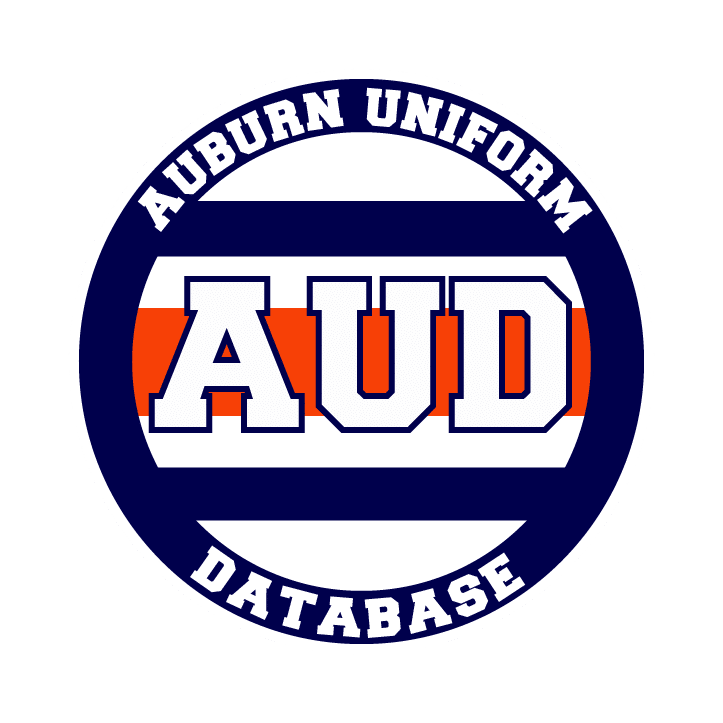








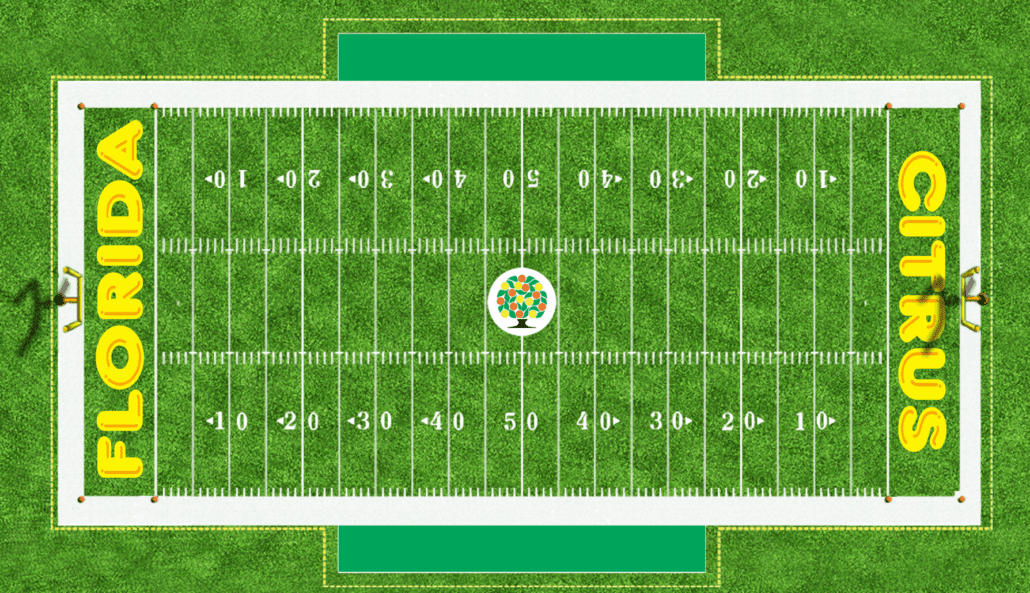

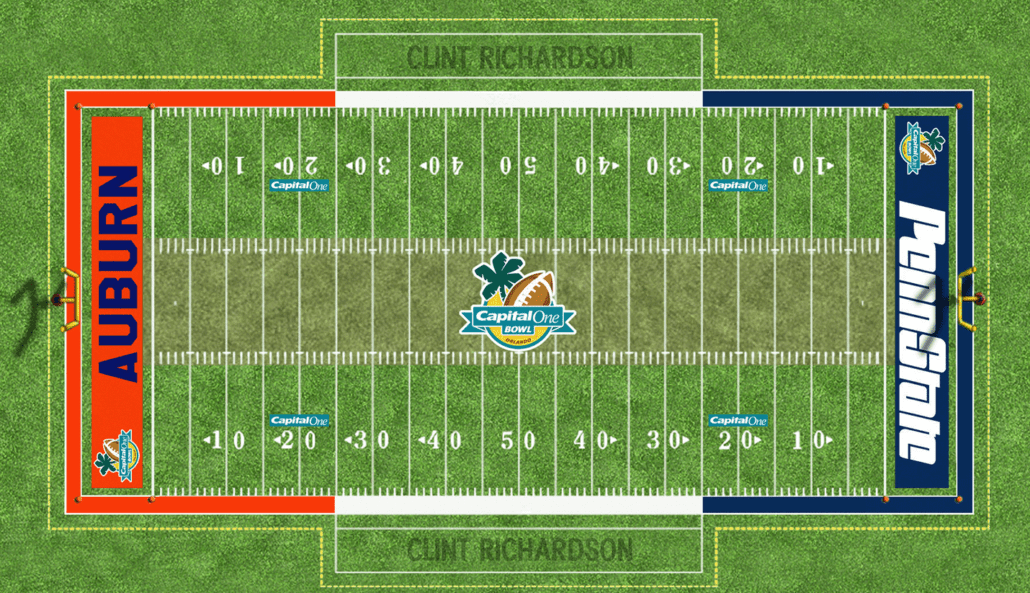

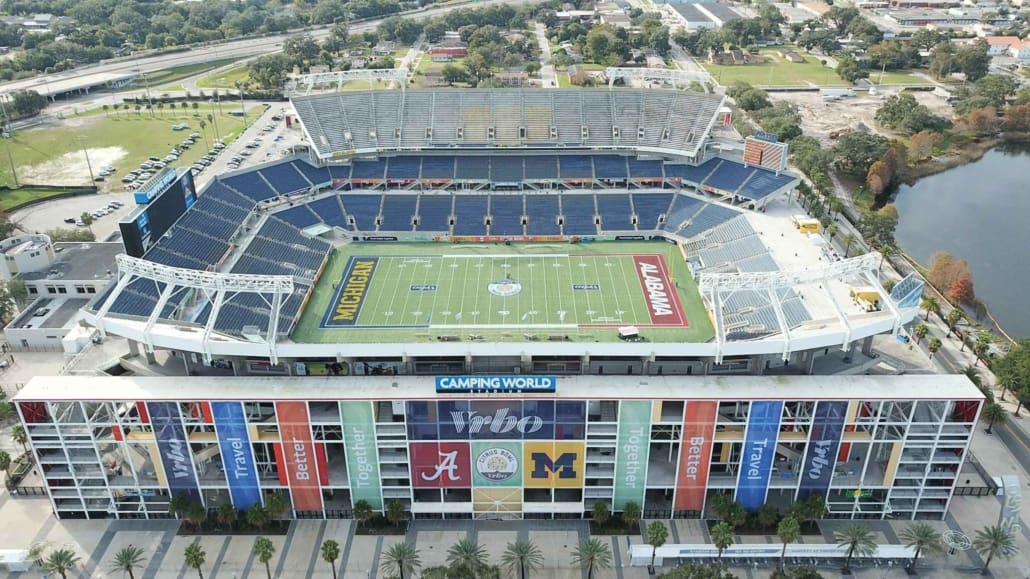
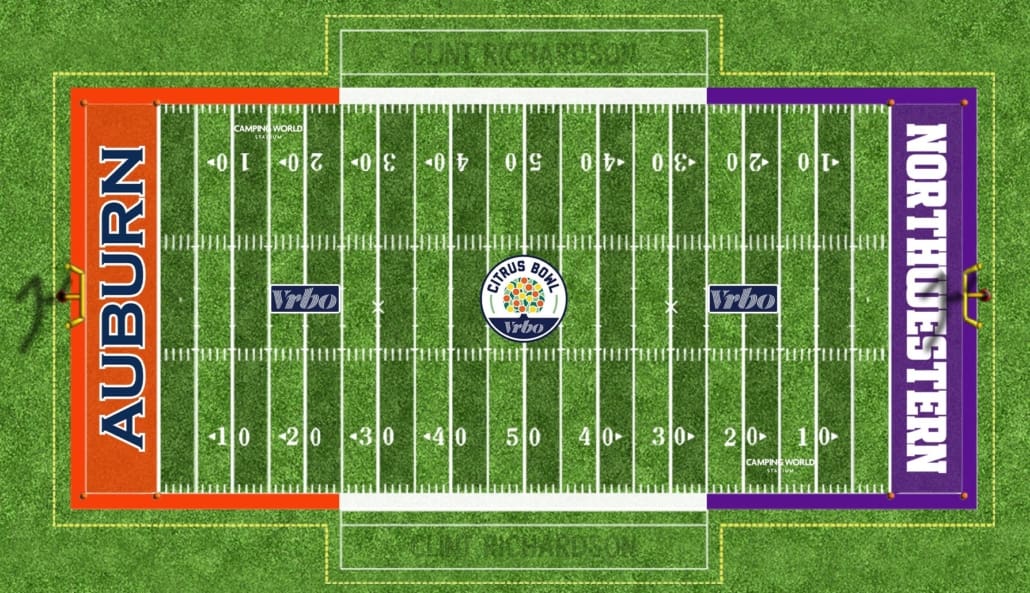



Leave a Reply
Want to join the discussion?Feel free to contribute!